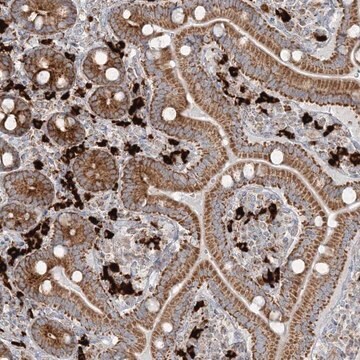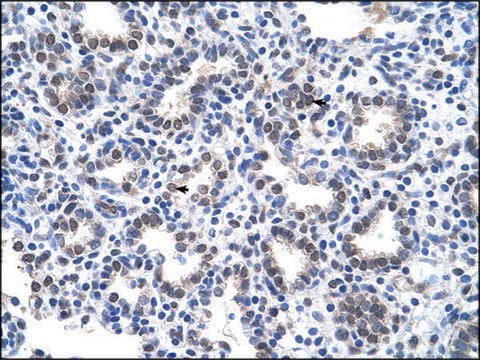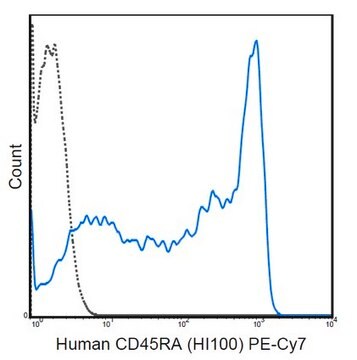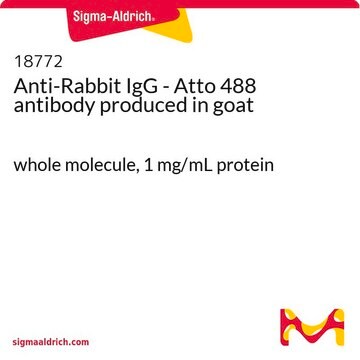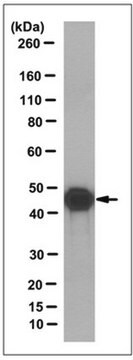MABN738
Anti-OCT6 Antibody, clone KT110
clone KT110, from mouse
Synonym(s):
POU domain, class 3, transcription factor 1, Octamer-binding protein 6, Oct-6, Octamer-binding transcription factor 6, OTF-6, POU domain transcription factor SCIP
About This Item
Recommended Products
biological source
mouse
Quality Level
antibody form
purified immunoglobulin
antibody product type
primary antibodies
clone
KT110, monoclonal
species reactivity
mouse, human
technique(s)
electrophoretic mobility shift assay: suitable
immunohistochemistry: suitable
western blot: suitable
isotype
IgG1κ
NCBI accession no.
UniProt accession no.
shipped in
wet ice
target post-translational modification
unmodified
Gene Information
human ... SLC22A16(85413)
General description
Immunogen
Application
Electophoretic Mobility Shift Assay (EMSA) Analysis: A representative lot detected SphK1 in nuclear extracts from RT4 Schwannoma or primay rat Shcwann cells (Prof. D. Meijer, Erasmus University Medical Center, Rotterdam.
Neuroscience
Developmental Signaling
Quality
Western Blotting Analysis: 1.0 µg/mL of this antibody detected OCT6 in 10 µg of H9 human embreyonic stem cell lysate.
Target description
Linkage
Physical form
Storage and Stability
Other Notes
Disclaimer
Not finding the right product?
Try our Product Selector Tool.
Storage Class Code
10 - Combustible liquids
WGK
WGK 2
Flash Point(F)
Not applicable
Flash Point(C)
Not applicable
Certificates of Analysis (COA)
Search for Certificates of Analysis (COA) by entering the products Lot/Batch Number. Lot and Batch Numbers can be found on a product’s label following the words ‘Lot’ or ‘Batch’.
Already Own This Product?
Find documentation for the products that you have recently purchased in the Document Library.
Our team of scientists has experience in all areas of research including Life Science, Material Science, Chemical Synthesis, Chromatography, Analytical and many others.
Contact Technical Service